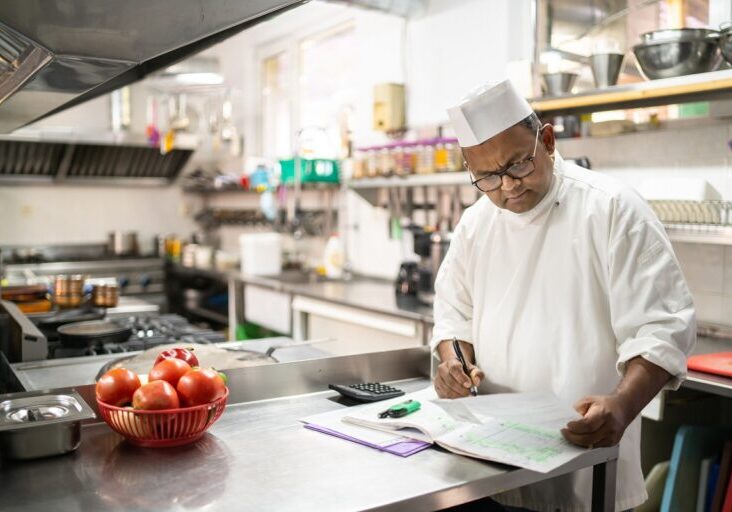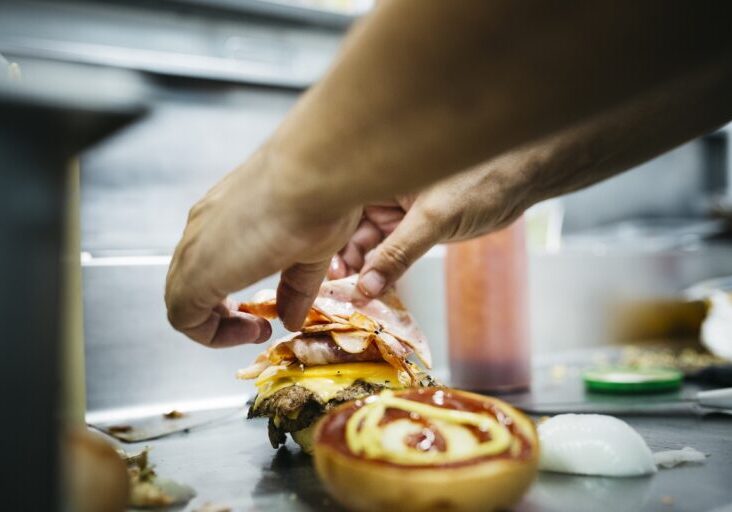Profit on the Plate: How McDonald’s Franchisees Can Take Control of Food Costs
Table of Contents
- Summary
- Why should food cost discipline matter to McDonald’s franchises?
- The difference between uncontrollable vs. controllable costs in restaurants
- How to build restaurant systems and routines that work
- Implement practical strategies for restaurant cost control
- Tighten up your inventory and accuracy
- Protect against potential internal theft
- Maximize yields and equipment efficiency
- Manage oil like an asset
- Control condiments
- Building a culture of profitability in your McDonald’s restaurant
- Give your GMs agency
- Promote accountability at every level
Summary: Food and paper costs are among the largest controllable expenses for McDonald’s franchisees. In this article, Aprio shares insights from a successful McDonald’s Director of Operations and proven strategies to reduce waste, manage controllable costs, and build systems that drive long-term profitability.
Food and paper costs are two of the largest expenses for McDonald’s franchises — but they’re also some of the most controllable costs on the balance sheet. (McDonalds)
This was just one of the many insights presenters shared in the latest segment of Aprio’s webinar series, “McDonald’s Franchisee Owners/Operators Essentials: Navigating Financial Success with Aprio.” During the webinar, Aprio Partner Kristin Ward and veteran McDonald’s Director of Operations Aaron Back shared a detailed playbook to help McDonald’s owner/operators manage food costs with discipline, accountability, and a culture of ownership.
Did you miss the live webinar? Scroll down for a recap.
Why should food cost discipline matter to McDonald’s franchises?
According to a 2025 benchmarking report compiled by Aprio’s Restaurant, Franchise, and Hospitality team, McDonald’s franchises typically average the following percentages when it comes to critical food cost metrics:
- Food cost year-to-date: 24.73%
- Base food cost: 19.77%
- Food over base: 3.69%
- Paper costs: 3.67%
While factors like menu pricing and raw product costs are largely outside of your control, the gap between base food and actual food cost — in other words, the “food over base” benchmark — is an area in which operational excellence can help you drive meaningful profitability improvements.
“We’re only as good as our record says we are,” said Aaron during the live webinar. “Even if you did well last month, what are you doing this month?” The food-over-base benchmark is a great place to start.
The difference between uncontrollable vs. controllable costs in restaurants
To better control your expenses and ultimately make your McDonald’s restaurant more profitable, you must know the difference between uncontrollable and controllable costs:
- Uncontrollable costs (base food): Think of these as your “base food” costs. Uncontrollable costs are driven by menu mix and pricing, but you can deploy several strategies (such as upselling and promoting lower-cost items like breakfast) to improve your averages.
- Controllable costs: These costs include waste, employee meals, condiments, theft, unexplained discounts, and oil management, among others.
No matter what budget approach works best for your McDonald’s restaurant, it’s essential to clearly separate the two types of costs and monitor them closely; this will make it easier for you to identify areas for improvement.
How to build restaurant systems and routines that work
During the webinar, Aaron and Kristin emphasized the importance of establishing and maintaining defined systems and routines to keep McDonald’s operations running smoothly. Some examples include:
- Food cost boards in every restaurant: In the McDonald’s restaurants he oversees, Aaron posts weekly results to food cost boards, clearly denoting the top three improvement areas for his crew to see.
- Visual management tools: You can create laminated pocket cards and wall charts to show your managers the real dollar value of waste (for example, “Four patties dropped = nearly $5 lost”).
- Checklists and scorecards: From swing managers to supervisors, make sure all your McDonald’s employees have a defined routine for their daily, weekly, and monthly responsibilities.
- SMART action planning: Be sure to address variances with a corrective plan and build follow-ups and action items into manager reviews.
Implement practical strategies for restaurant cost control
Once you have developed reliable systems and routines, you can start to explore more effective strategies to rein in controllable costs at your McDonald’s restaurant:
Tighten up your inventory and accuracy
In the restaurants, Aaron and his team conduct staged inventory counts three days before month-end and perform multiple rounds of review to eliminate inaccuracies. According to Aaron, this helps ensure that the restaurants’ profit and loss (P&L) reporting reflects reality and not errors.
Protect against potential internal theft
Though it may be difficult to reconcile a situation in which a team member commits theft, it’s still important to have the tough conversations and be prepared. Consider taking preventative measures to protect your restaurant, such as locking freezers at close, monitoring closing processes, and auditing suspicious employee behavior.
Maximize yields and equipment efficiency
It’s important to regularly calibrate all the machinery in your McDonald’s restaurant. Be sure to check your fryers, grills, shake machines, and ice cream pumps against scales to help ensure your team is serving the right portions every time. You should also introduce weekly pump cleanings and quarterly tune-ups to prevent costly overpouring.
Manage oil like an asset
Like many McDonald’s restaurants, oil is likely one of the most significant costs in your COGS — but it’s also one of the most controllable. By implementing practices like daily filtering and supervisor-only approvals for oil changes, you could potentially save tens of thousands of dollars annually.
Control condiments
From ketchup packets to sweeteners, make sure that your team doesn’t leave any condiments on the counter. What’s more, you can minimize waste and potential theft by deploying practices that better control condiment and counter distribution.
Building a culture of profitability in your McDonald’s restaurant
In the webinar, one of the most powerful insights our presenters shared was cultural, not operational. Here are a few key highlights:
Give your GMs agency
Aaron considers general managers (GMs) to be “CEOs” of the McDonald’s restaurants he oversees. To provide your own GMs with more agency, independence, and growth opportunities, train them to review P&Ls, lead action planning, and present results at monthly profit center meetings, among other ideas.
Promote accountability at every level
From asking your kitchen managers to post weekly waste action items to asking supervisors to submit weekly reports, it’s important to give your team responsibilities that help build accountability into your organizational structure.
At Aprio, we know that controlling food costs isn’t about cutting corners; it’s about empowering your team and managers with the data, systems, and accountability they need to protect profitability while delivering the consistency McDonald’s customers expect.
Stay informed with Aprio.
Get industry news and leading insights delivered straight to your inbox.
How we can help
Aprio partners with McDonald’s owner/operators to provide benchmarking, financial analysis, and advisory strategies that go beyond the numbers.



